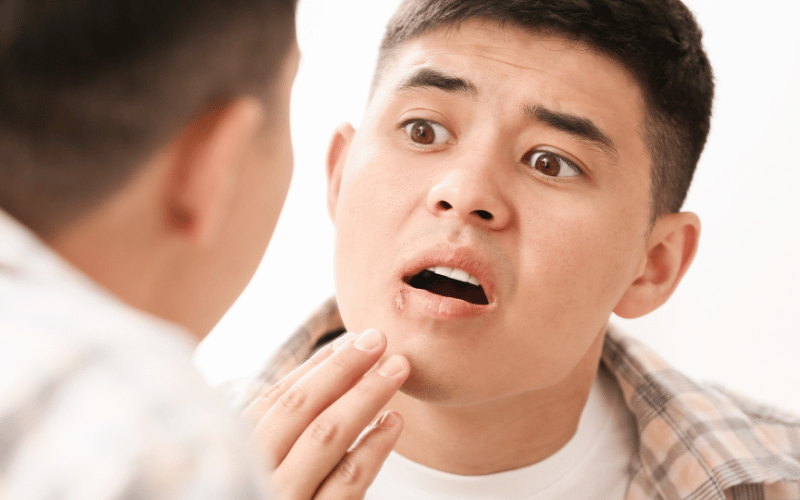Introduction: Recognizing the Early Signs of Cold Sores
Cold sores, more formally known as fever blisters or herpes labialis, have become an all too common ailment that many face. While some dismiss them as mere skin blemishes, they signify an active herpes simplex virus infection. This is far more than a mere cosmetic concern; these sores can be painful, and their appearance often has psychological effects, causing distress to those afflicted.

These sores are not just a fleeting skin concern; they are a manifestation of an underlying viral infection that remains dormant in the body and can flare up multiple times throughout one’s life. The ability to identify the early signs of a cold sore can arm individuals with the information they need to start treatments promptly, potentially reducing the severity or duration of an outbreak.
Understanding these signs can also allow individuals to take precautionary measures, reducing the risk of transmitting the virus to others. This article aims to enlighten readers on the top 10 symptoms associated with cold sores. With the right knowledge, you can stay one step ahead and better manage this recurring issue.
Symptom 1: Tingling and Itching

Before the visual onslaught of a cold sore comes the initial symptom: tingling and itching. It’s like your skin’s very own alarm bell. When this sensation begins, it might be faint—just a hint of discomfort. Yet, as hours progress, the feeling becomes undeniable. The skin around the mouth starts to feel like it’s humming or buzzing, signaling the impending arrival of the cold sore.
This tingling sensation is not just skin-deep; it’s indicative of the herpes simplex virus reactivating. Dormant for periods, the virus springs to life under certain triggers, and the tingling is evidence of its renewed activity. It’s the virus inching its way towards the skin’s surface, ready to present itself in the form of a blister.
Beyond the physical sensation, there’s an emotional component to this symptom. For many, that tingling heralds not just a cold sore, but days of self-consciousness. A mental countdown begins: how long before the sore appears? How severe will it be this time? This looming dread can be just as challenging to manage as the physical symptom itself.
If there’s a silver lining to this tingling and itching, it’s that it offers a preemptive window for treatment. Recognizing this early sign gives individuals a head start. Acting promptly, employing creams or antiviral treatments at this stage, can potentially reduce the outbreak’s severity or even halt its progression.
This tingling is also a vital sign that one has entered a contagious phase. It serves as a reminder to adopt precautions, ensuring that we don’t inadvertently pass the virus to others, especially those who’ve never had a cold sore. Keeping personal items separate and avoiding close personal contact can limit the virus’s spread. (1)